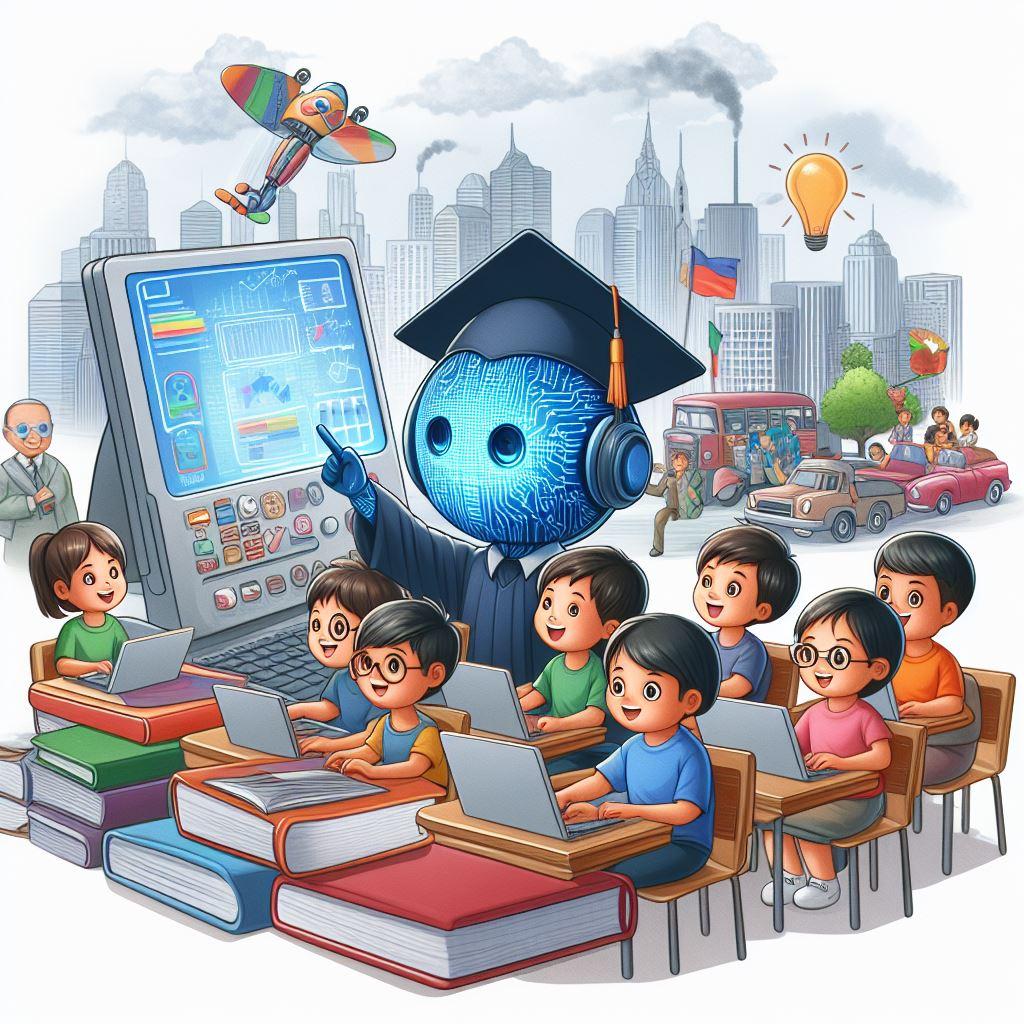Transforming learning Worldwide: How AI is Personalising Education Across the Globe
Artificial Intelligence (AI) is revolutionising almost every sector, but its impact on education is truly transformative.As schools and universities embrace digital innovation, AI-driven personalised learning experiences are becoming the cornerstone of modern education—empowering learners, educators, and institutions across the globe. In this comprehensive guide,we’ll delve into how AI is personalising education worldwide,explore practical benefits,share real-life case studies,and provide actionable tips for integrating AI into learning environments.
Why Personalised Learning Matters in Education
Personalised learning adapts content, pace, and delivery style to fit the unique needs of each student. Traditional education models, often limited by logistical and curricular constraints, struggle to address diverse learner profiles. AI-powered solutions, however, provide targeted interventions, making learning more effective and engaging. Personalised learning:
- Caters to various learning speeds and styles.
- Provides instant feedback for continual improvement.
- Enhances motivation with relevant and meaningful content.
- Enables educators to spend more time on student support and less on repetitive tasks.
How AI is Personalising Education Worldwide
AI personalisation in education is disrupting traditional methodologies by automating administrative workflows, enabling adaptive learning platforms, and providing data-driven insights. Here are the main ways AI is transforming learning globally:
1. Adaptive Learning Platforms
Platforms like Duolingo, Khan Academy, and Coursera use elegant AI algorithms to adjust lesson difficulty, recommend resources, and provide targeted practice.This ensures that every student gets learning material suited to their skills and progress.
2. Clever Tutoring Systems
AI-driven tutoring systems analyze student responses in real time and offer personalised feedback. Noteworthy examples include:
- Carnegie Learning’s MATHia: Delivers tailored math instruction based on individual performance data.
- Jill Watson: An AI teaching assistant at Georgia Tech that helps answer student queries efficiently.
3. Predictive Analytics for Student Success
AI can predict academic performance by analysing attendance, assignments, test scores, and engagement levels.Institutions worldwide employ predictive analytics to:
- Identify at-risk students and intervene early.
- Personalise curriculum and support services.
- Increase graduation rates and optimise resource allocation.
4. Automated Assessment and Feedback
AI automates grading and gives instant, actionable feedback on assignments. Not only does this save educators time, but it ensures students can correct mistakes and improve learning outcomes rapidly.
5. language Processing for Global Accessibility
Natural Language Processing (NLP) enables AI systems to break language barriers, translate content, and support multilingual classrooms.This fosters inclusive, globalised education environments.
Real-World Case Studies: AI Transforming Learning Around the Globe
- India: EdTech startup BYJU’S employs AI to personalise learning pathways for millions of students, adapting content based on user behavior and performance analytics.
- China: The ministry of Education integrates AI-based tools to support personalised math and English learning, showcasing dramatic improvements in national literacy and numeracy rates.
- Finland: Schools use AI-powered learning analytics to identify individual student needs and create customised learning programs.
- United States: New York City Public Schools deploy AI-driven adaptive curriculum platforms, leading to measurable gains in student engagement and achievement across diverse demographics.
Benefits of AI-Powered Personalised Learning
- Increased Engagement: Students receive content that matches their interests and learning pace, leading to higher participation rates.
- Improved Outcomes: Personalisation fosters better understanding, retention, and academic achievement.
- Global Accessibility: AI bridges geographical,language,and socio-economic gaps,making education available to more learners worldwide.
- Efficient Resource Management: AI automates grading, scheduling, and reporting, freeing educators to focus on impactful instruction.
- Scalable Solutions: AI-driven platforms serve millions of students simultaneously, accommodating growth without sacrificing quality.
- Data-Informed Decisions: Educators and administrators use AI-generated insights to inform curriculum design and interventions.
Practical tips for Integrating AI into Educational Settings
-
Start Small:
Pilot AI-powered tools in selected classrooms or courses and gradually expand based on feedback and success metrics.
-
Train Educators:
Provide professional advancement on using AI technologies, interpreting data analytics, and supporting students in an AI-enhanced environment.
-
Ensure Data Privacy and Security:
Choose solutions that adhere to ethical standards in data usage,storage,and student privacy.
-
Foster Inclusivity:
Make sure AI platforms are accessible for students with diverse needs, backgrounds, and abilities.
-
Encourage Feedback:
Regularly solicit feedback from students and teachers to refine AI systems and enhance learning experiences.
First-Hand Experiences: What Teachers and Students Say
“Since introducing AI-based tutoring, my students are more engaged and confident. The instant feedback lets them see progress every day, and I’m able to focus more on their unique needs during class time.”
— Emily R., High School Mathematics Teacher, UK
“AI recommends practice problems that actually help me understand tough concepts. It’s like having a personal tutor available anytime I need!”
— Arun S., 14-year-old Student, India
Challenges & future Prospects
Despite remarkable progress, integrating AI in education isn’t without challenges:
- Equitable Access: Ensuring all students have access to AI technology, especially in remote or underserved regions.
- quality Assurance: Maintaining rigorous standards amid rapid innovation.
- Human Oversight: balancing AI automation with meaningful teacher involvement and mentorship.
Looking ahead, AI will likely facilitate hyper-personalised curricula, smart content creation, and real-time learning analytics—making education truly inclusive, impactful, and borderless.
Conclusion: Embracing the AI Revolution in Global Education
AI-powered personalised learning is shaping the future of education, enabling tailored instruction, improving outcomes, and breaking down barriers to access. As technology evolves, educators, administrators, and policymakers must work together to harness its full potential while ensuring ethical, inclusive, and effective learning environments worldwide.
Ready to integrate AI into your educational practice? Start exploring adaptive platforms,train your teams,and join the movement transforming learning for students everywhere. The future of personalised education is here—and it’s global, dynamic, and powered by AI.

